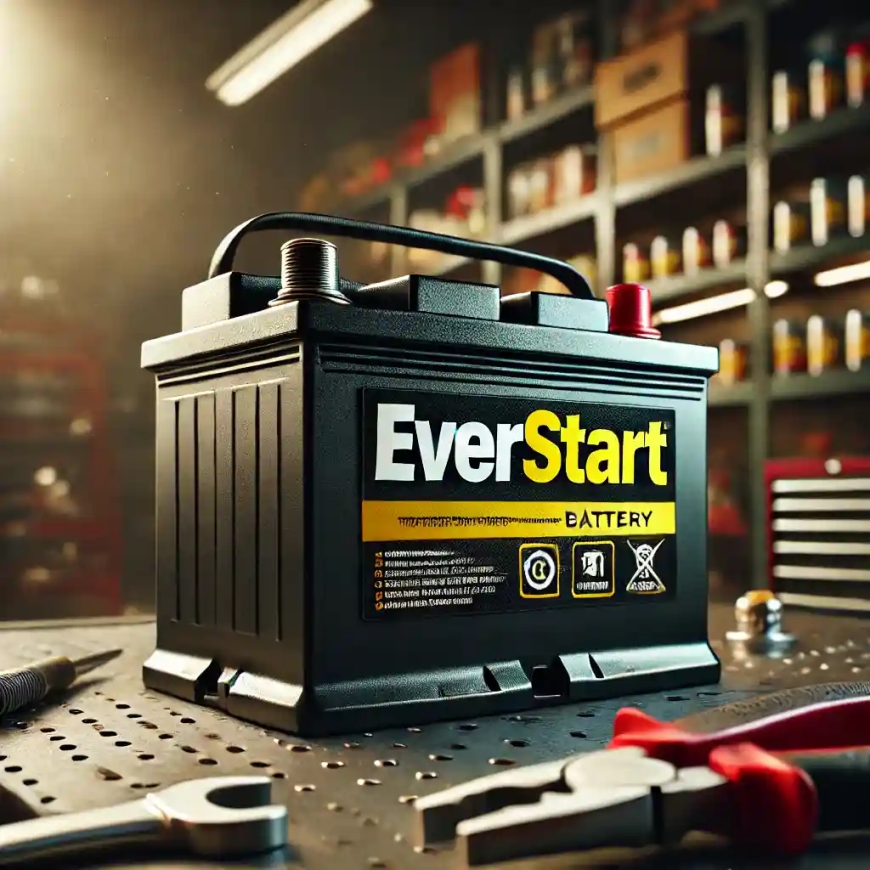Signs Your Vehicle Battery Needs Replacing

Few components are as critical to dependable motoring as the humble 12?volt battery. From supplying the surge that cranks the starter motor to stabilizing voltage for dozens of onboard computers, a healthy battery is the cornerstone of every successful journey. Brands like EverStart?Battery have earned a loyal following because they combine wallet?friendly prices with reliable cold?cranking performance, yet even a well?built EverStart will eventually reach the end of its service life. Recognizing the warning signs before total failure can save you time, money, and the headache of waiting for roadside assistance.
1. Sluggish Engine Crank
The most obvious clue that your battery is fading is a slow, labored crank when you turn the key or press the start button. A healthy battery delivers an instant jolt of current; if the starter motor turns noticeably slowerespecially after the vehicle has been parked overnightinternal capacity is likely dropping. Dont shrug it off as just the cold; consistent sluggish cranking means its time to schedule a battery test.
2. Clicking Sounds on Startup
A rapid clicking noise instead of a full crank indicates that the battery voltage is too low to engage the starter solenoid. Sometimes you can revive the battery temporarily with a jump?start, but repeated clicks are your vehicles way of saying, Replace me soonbefore one morning the engine refuses to turn at all.
3. Dim or Flickering Lights
Headlights that dim when you come to a stop, or dashboard LEDs that flicker as accessories cycle on and off, suggest that the battery can no longer provide stable voltage. Modern alternators regulate output based on demand; if the battery acts like a weak capacitor, voltage will dip under load and your lights will show it.
4. Electrical Gremlins and Warning Lights
Random issuesradio presets disappearing, power windows slowing, ABS or air?bag lights appearing without causecan trace back to low battery voltage. Before chasing complex wiring faults, rule out the simplest culprit: an aging battery that cant keep electronic modules fed with steady current.
5. Swollen, Leaking, or Corroded Case
Inspect the battery under the hood (or in the trunk) at every oil change. A bulging case caused by heat or overcharging, wetness from leaking electrolyte, or heavy terminal corrosion are red flags. While baking?soda paste can clean mild corrosion, swelling and leaks are non?negotiable reasons to replace the battery immediately.
6. Age Beyond Three to Five Years
Even the most robust flooded?lead battery has a finite life. Heat, vibration, and repeated discharge cycles corrode internal plates. If your battery is over three years oldfive in mild climatesschedule a free load test at your nearest parts store or service center. Most EverStart batteries feature a convenient date sticker; if its punch?out is approaching the warranty limit, plan for a proactive replacement instead of a reactive tow.
Why Choose EverStart?Batteries
When the tests confirm its time for new power, EverStart?batteries deserve a spot on your short list for several compelling reasons:
-
Consistent Cold?Cranking Amps (CCA)
Independent load tests repeatedly show EverStart delivers rated CCAeven near the end of its warrantyhelping you avoid sluggish winter starts. -
Robust Reserve Capacity (RC)
Higher RC provides a safety net if the alternator fails or you accidentally leave the headlights on, buying crucial extra minutes to reach help. -
Maintenance?Free Convenience
EverStarts sealed designs with flame?arrestor vents eliminate messy water top?offs while still permitting safe gas release. -
Nationwide Warranty and Availability
Sold through thousands of Walmart Auto Care Centers and partner retailers, EverStarts straightforward replacement warranty makes swaps quick, easy, and close to home. -
Value Without Compromise
Riders, commuters, and fleet operators alike appreciate EverStarts balance of quality materialsreinforced grids, envelope separators, vibration?resistant casesat prices well below many boutique brands.
Opting for EverStart means youre not just replacing a dead battery; youre upgrading to a reputable product backed by convenient service and a track record of durability.
7. Repeated Jump?Starts or Frequent Boosting
Needing a jump once after leaving the dome light on isnt alarming, but multiple boosts in a single month signal your batterys capacity is shot. Each deep discharge accelerates sulfation on the lead plates, permanently reducing storage potential. Rather than carrying jumper cables as a crutch, invest in a fresh battery and restore confidence every time you turn the key.
8. Unusual Odors
A rotten?egg smell under the hood points to hydrogen sulfidea by?product of internal overcharging or shorted cells. This not only indicates imminent battery failure but can corrode nearby metal parts. Replace the battery promptly and have your charging system tested to ensure the alternators voltage regulator is within spec.
9. Voltage Readings Below 12.4?V Resting
A quick multimeter check after the vehicle sits overnight reveals state of charge. Healthy flooded batteries stabilize around 12.6?V; anything under 12.4?V means less than 75?% charge. Combine that with age or other symptoms, and replacement is prudent.
Final Thoughts
Your vehicle gives plenty of hints before the battery quits entirelysluggish cranking, dim lights, odd electrical glitches, or a case that looks swollen. Heed those warnings, run a load test, and compare the results to manufacturer specs. If numbers fall shortor the calendar says your battery is aging outdont wait for a breakdown. Swap in a trustworthy replacement like an EverStart?battery to restore full cranking power, stable voltage, and peace of mind, ensuring you spend your mornings driving to worknot calling for a jump.







































